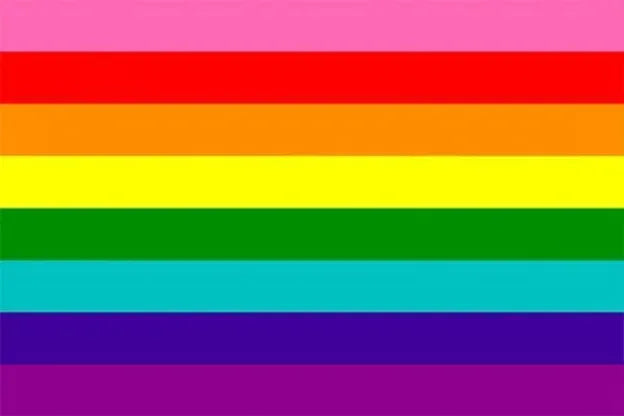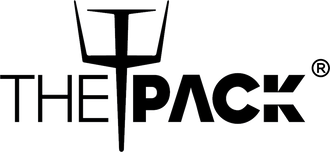
ALL THE GAY FLAGS: THE EVOLUTION
The rainbow pride flag is likely the most widely recognized symbol of the LGBTQ+ community worldwide. But over the past four decades, dozens of pride flags have emerged representing the diverse identities, experiences, and relationships within the queer community. Each flag contributes unique symbolism and visibility for various groups under the larger movement towards acceptance and equality.
Origins of the Rainbow Pride Flag
The first rainbow pride flag was designed by Gilbert Baker, an openly gay artist and activist, in 1978. It was hand dyed and hand sewn, consisting of eight colored stripes - each with a specific meaning:
- Hot pink - Sex
- Red - Life
- Orange - Healing
- Yellow - Sunlight
- Green - Nature
- Turquoise - Magic/Art
- Indigo - Serenity
- Violet - Spirit
This original eight-striped flag first debuted at the San Francisco Gay Freedom Day Parade on June 25, 1978, creating an upbeat symbol to represent the diversity of LGBTQ+ communities.
However, due to manufacturing constraints and the need for an even number of stripes, the six-stripe version became the most common form of the pride flag. The indigo and turquoise stripes were removed, leaving red, orange, yellow, green, blue, and violet. Over the next four decades, the rainbow flag gained worldwide popularity and inspired countless variations as the queer rights movement expanded.
Intersex Pride Flag

Created in 2013 by intersex advocate Morgan Carpenter, this flag features a purple circle against a yellow background. Purple represents the intersex community as a distinct group, while yellow is the historical "hermaphrodite" color used in early medical literature. This design promotes visibility for intersex people amid activism for human rights.
Transgender Pride Flag

Designed in 1999 by Monica Helms, the transgender pride flag consists of five horizontal stripes: light blue, pink, white, pink, and light blue. These colors present a symbolic spectrum of transgender identities and limitless gender possibilities. The flag quickly gained popularity as a shared symbol for the trans community after its debut.
Non-Binary Pride Flag

With four stripes - yellow, white, purple and black - this flag designed in 2014 provides visibility for individuals who identify outside of the male/female gender binary. The colors were intentionally selected to exist outside the traditional pink/blue binary. Intended as an inclusive symbol, this flag represents the expansive spectrum of non-binary gender.
Bisexual Pride Flag

Created in 1998 by activist Michael Page, the bisexual pride flag consists of three equal stripes - pink, purple and blue. This represents attraction to both one's own and other genders. The purple stripe in the middle symbolizes the full spectrum of bisexual identity between and encompassing the neighboring colors.
Lesbian Pride Flag

The lesbian pride flag includes various shades of pink, orange, and white, each carrying a different meaning:
- Pink - Gender non-conforming lesbians
- Orange - Butch lesbians
- White - Femme lesbians
- Pink - Lipstick lesbians
Bringing together diverse expressions of lesbian identity, this flag designed in 2018 provides shared symbolism and pride.
Asexual Pride Flag

First emerging online in 2010, the asexual pride flag consists of four stripes: black, grey, white and purple. Black represents asexuality, grey for greysexuals and demisexuals, white for allies and partners, and purple for community. Together these colors symbolize the spectrum of asexual identity.
Gay Men's Flags

While the rainbow pride flag represents the entire LGBTQ+ community, some more specific identities have called for their own symbols. A few different pride flags exist uniquely for gay men.
● Blue Gay Pride Flag
One early example is a light blue pride flag designed in the 1990s to give gay men their own distinct emblem. The single blue stripe represents masculinity and also references the “blue boy” artworks popularized in the late 1800s that depicted nude adolescent males.
● Victory Over AIDS Flag
As the AIDS crisis took devastating tolls in the 1980s and 90s, activists modified the rainbow flag by adding a black stripe across the bottom to memorialize lives lost. Originally called the Victory Over AIDS flag, this variant became a somber symbol of the community’s grief while continuing the fight against the epidemic.
● Leather Pride Flag

A subculture pride flag related to gay masculinity is that of the leather community. Designed in 1989, the leather pride flag consists of black, blue, and white stripes with a large red heart. This pays homage to kink and BDSM roles historically associated with gay male cultures.
● Bear Brotherhood Flag

More recently in the 1990s, the bear flag was created to represent another subculture of gay masculinity inclusive of hirsute and larger-bodied men. With various stripes representing colors of bear identities, this flag pays tribute to those embracing natural expressions of “bear” culture within the LGBTQ+ community.
So while the rainbow flag flies for all, flags like blue, leather, and bear represent pride in the diversity of gay male identities and relationships under that colorful umbrella. They display solidarity both within subsets of the LGBTQ+ community and with the greater movement overall.
Pansexual Pride Flag

Similar in appearance to the bisexual pride flag, the pansexual pride flag consists of three stripes - pink, yellow and blue. The pink and blue have the same meaning, representing attraction to both one's own gender and other genders. The yellow in the middle symbolizes attraction to people outside of the gender binary who identify as genderfluid, agender, or other identities. This flag was intended to distinguish the more expansive definition of pansexuality from bisexuality.
Philadelphia Pride Flag

In 2017, the city of Philadelphia adopted a revised version of the rainbow pride flag that added a black and brown stripe above the traditional six colors. This was intended to highlight LGBTQ+ people of color and address racial discrimination within the community. The design quickly spread to other pride events seeking to increase emphasis on diversity and intersectionality.
Progress Pride Flag

In 2018, nonbinary graphic designer Daniel Quasar added an additional chevron to the rainbow flag including black, brown, light blue, pink, and white stripes. This Progress Pride Flag aims to highlight LGBTQ+ people of color, transgender individuals, and those impacted by HIV/AIDS. The arrow shape points right to signify forward movement, while being on the left edge represents continued progress needed.
Redesigns for Inclusivity
Growing emphasis on diversity and intersectionality within Pride has led to redesigns of traditional flags. Some alternatives replace parts of the rainbow with black and brown to better include LGBTQ+ people of color. Critics debate these changes, but most agree Pride should celebrate all queer people and their origins in communities of color.
Identities Beyond the Acronym

(RUBBER PRIDE FLAG)
From leather to rubber, polyamorous to asexual, dozens of flags now represent queer identities even beyond the LGBTQ+ acronym. As the community expands its inclusivity, new visibility is given to the countless colorful ways of being LGBTQ+. Even niche identities have Pride symbols, showing just how broad the rainbow can be.
Two-Spirit Pride Flag

The Two-Spirit Pride flag represents queer Native American and indigenous individuals. Two-spirit is an umbrella term originating from some tribal cultures describing those with both masculine and feminine spirits or fulfilment of multiple gender roles. The flag's colors derive from designs by artist Myra Laramee, with the purple circle representing the masculine and feminine merged. This flag honors LGBTQ+ identities within the context of traditional Native cultures.
Aromantic Flag

Persons identifying as aromantic lack romantic attraction toward others. Their orientation focuses on platonic connections rather than romantic ones. Designed online in the early 2010s, the aromantic flag consists of dark green, light green, white, gray, and black stripes. The greens represent aromanticism itself, gray represents various identities on the aromantic spectrum, and black stands for all aromantic sexualities.
Agender Pride Flag

Created in 2014, the agender pride flag represents those who consider themselves genderless or neutral. The four stripes - black, gray, green and white - encompass various expressions of gender identity. Black and grey represent an absence of gender, white is for people with multiplicity or neutrality of genders, and green shows non-binary gender identities. This flag promotes visibility for people whose sense of self exists without gender.
Polysexual Flag

Attraction toward multiple genders, but not all, is defined as polysexuality. Distinct from bisexuality and pansexuality, polysexuals may be drawn to femininity and masculinity, but not neutral or third genders. The polysexual flag, created online in 2012, combines pink, blue and green stripes. Pink and blue reference women and men as in the bisexual flag, while green represents attraction to non-binary gender identities.
Genderqueer Pride Flag

For those who identify outside of or reject the male/female gender binary, the genderqueer pride flag beautifully represents the fluidity of their experience. Created by activist Marilyn Roxie in 2011, it features lavender, white, and chartreuse green stripes. Lavender symbolizes androgyny, white stands for agender identities, and green represents non-binary gender expression. This flag has become a unifying emblem of the genderqueer community.
Genderfluid Pride Flag

With five horizontal stripes, this flag encompasses all the potential shifts and changes in gender identity for genderfluid individuals. Pink and blue represent the traditional feminine and masculine, purple is the combination, black denotes the absence of gender, and white - in the middle - stands for all genders. The genderfluid flag designed in 2012 provides visibility and pride for those with a dynamic or changing experience of gender.
Demisexual Flag

Within the asexual spectrum is the more specific identity known as demisexual - those who only experience sexual attraction after forming an emotional bond. While modeled off the asexual flag, the demisexual pride flag designed in 2010 has its own distinct palette and order of stripes. It combines dark grey, light grey, white, and purple to represent the nuances of this orientation.
Queer People of Color Flag

Seeking to spotlight queer people within communities of color, a pride flag with a raised fist was created as a symbol of solidarity, resistance, and intersectionality. The rainbow colors layered on the fist represent the diversity of LGBTQ+ experiences. This important flag and its symbolism gained popularity online amid 2020's Black Lives Matter protests and ongoing racial justice activism.
Pride Flags of Other Nations
LGBTQ+ communities worldwide have adopted the rainbow flag - often incorporating elements of their national flags. Regional Pride flags provide visibility for local queer communities and customs. In some countries where LGBTQ+ rights are limited, Pride flags take on greater meaning as symbols of protest and hope.
The Rainbow Goes Corporate

In recent decades, rainbow Pride aesthetics have been embraced by major corporations and brands. This has generated debates about commercialization and pinkwashing. However, increased mainstream acceptance of LGBTQ+ Pride remains positive. Gilbert Baker's original flag was meant as a “joyful expression of [queer] community and pride”. Its rainbow hues continue inspiring that spirit for new generations.
Looking to the Future
As LGBTQ+ identities expand and evolve, so too will Pride symbols. But at their root will remain the rainbow's themes of diversity, inclusivity, and visibility. The fundamental power of Gilbert Baker's first rainbow banner persists no matter how many new stripes are added or what identities they represent. The rainbow means strength, hope and celebration for all under the LGBTQ+ umbrella, yesterday, today and tomorrow.









